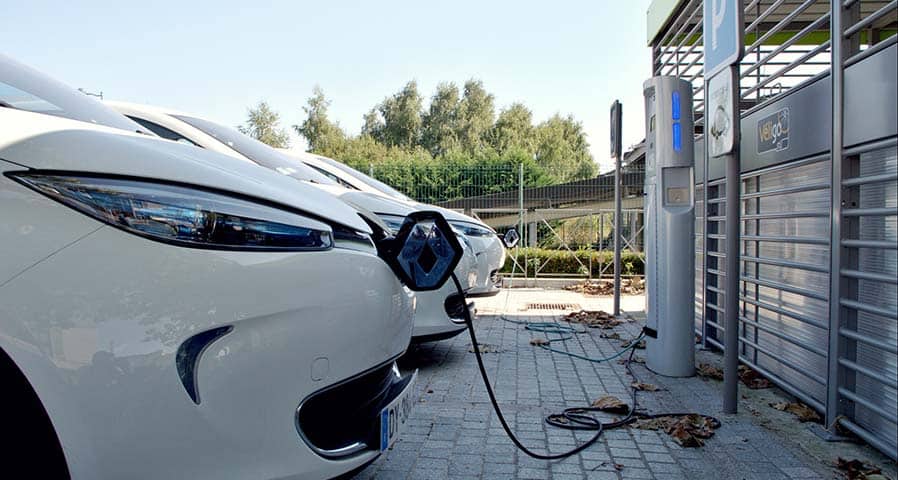The bipartisan Infrastructure Investment and Jobs Act (IIJA) is committing $5 billion to electric vehicle infrastructure. Part of the act is the National Electric Vehicle Infrastructure (NEVI) Formula Program which is allocating the funds to states and territories to boost the number of EV chargers along the nation’s highways.
With funds from the NEVI Formula Program getting ready to start coming into the states, regulations are being developed to help guide recipients in the money’s best uses.
Key Takeaways from the NEVI Formula Program
To help ensure states are ready to start working on their EV infrastructure, here are a few regulations expected in the program.
Where Should You Place the EV Chargers?
Each state is unique in terms of its current EV infrastructure. Some states have a more robust buildout than others. The locations of major cities and popular destination spots also vary.
States want to place the EV chargers to meet the needs of long-distance drivers and commuters. It means spacing the infrastructure at appropriate intervals along drivers’ routes. The amount of traffic in an area also plays a role in charger placement. For example, you may only need a few chargers in rural areas while a large metropolitan area will require more stations to accommodate drivers.
Connecting EV Chargers to the Electric Grid and Sustainable Energy Sources
Not all EV chargers can connect to renewable energy sources, so it’s not a prerequisite of the NEVI Formula Program. However, states want to encourage the use of renewable energy whenever possible.
Using EV chargers with a flexible operating system, allows operators to take advantage of the best energy sources for the location.
Where to Place EV Chargers Off of the Highway
Fast DC chargers can add a range of around 100 miles in about 30 minutes. These fast chargers are ideal at locations where drivers only spend a few minutes like gas stations and rest areas.
Slower and less-expensive AC chargers work well at locations drivers typically spend an hour or more at. Places like shopping centers, hotels, and restaurants are a few examples.
How to Ensure Rural Communities Have Access to EV Infrastructure
By reserving a large portion of the NEVI Formula Program funds, states can ensure everyone has access to EV charging. People in rural and underserved communities don’t always have access to personal vehicles, instead, depending on public transportation. Providing funding for bus and fleet electrification ensures everyone has access to EV charging.
How Do States Maintain and Keep the EV Infrastructure Operating Long-Term?
To ensure EV chargers are always functioning optimally for drivers, the federal government should require operators to commit to routine maintenance that is evaluated annually. Using a robust, smart operating system can help operators troubleshoot any issues before they become challenges.
How to Leverage Existing EV Charging Programs and Incentives
The IIJA Act is providing states and territories with funding to improve their EV infrastructure, but this money is separate from existing rebates and other financial incentives. Federal and local governments must ensure these incentives do not cover more than 100% of the total EV infrastructure project costs.
Consider Leveraging Private Funds to Maximize EV Infrastructure
Businesses that are already investing private funds to maximize their EV infrastructure can also take advantage of the NEVI Formula Program. These funds can help businesses purchase chargers and build out their infrastructure. By combining both of these types of funding, companies can have more EV chargers for their employees, customers, and visitors.
How to Meet Current and Future Electricity Trends and Minimize Charging Times
States should have the ability to decide which type of charger is best suited for a location with access to power, electrical costs, and expected usage all factored into the decision.
It’s also a good idea for states to install EV chargers with the option of adding more in the future. It’s also recommended to have at least one EV charger at high usage locations that can support the charging needs of older model electric vehicles.
Should I Consider Any Other Factors?
EV chargers should be able to accept multiple forms of payment. The EV chargers should also work with other charging memberships. The goal of building out your EV infrastructure is to help ensure all EV drivers have access to chargers.
If you have questions about the National Electric Vehicle Infrastructure Formula Program or want to learn more about building out your current EV infrastructure, contact us today! Call 484-815-2076, email [email protected], or schedule a call that fits your need by clicking the button below.








0 Comments